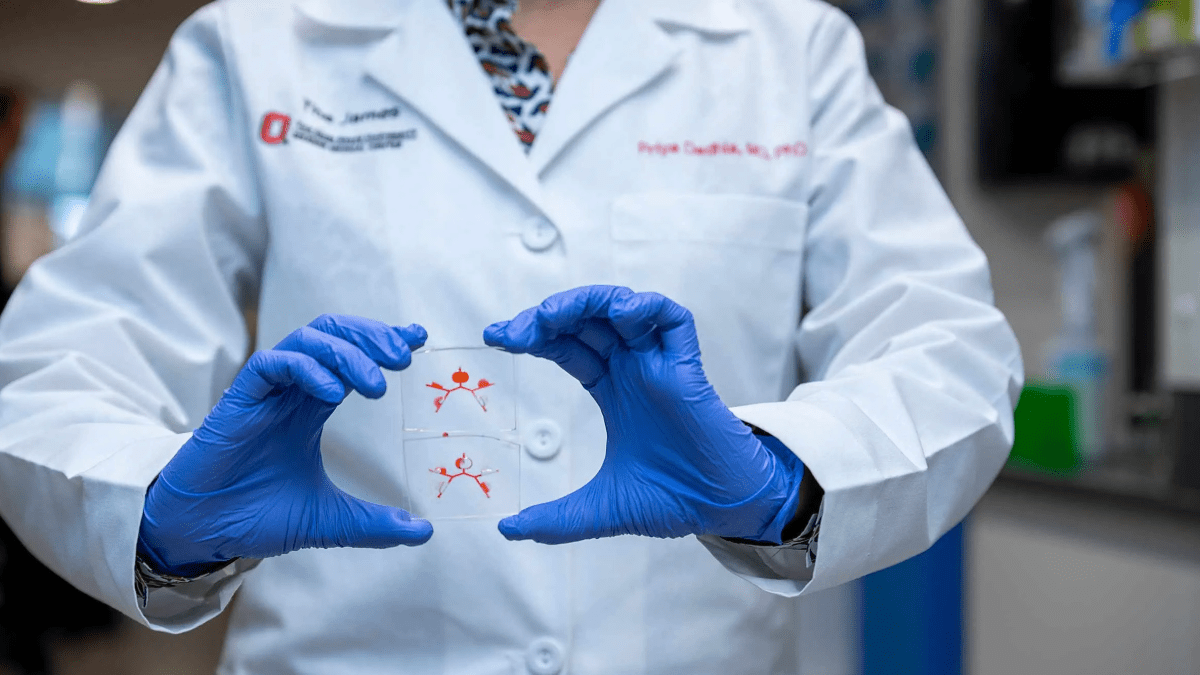Ohio State researchers study mechanisms of intraocular pressure to gauge response to glaucoma medications

It is estimated that 76 million people worldwide have glaucoma, a chronic and progressive disease that can lead to vision loss and blindness. Currently, effective treatments for glaucoma — medications that reduce intraocular pressure (IOP) and in more aggressive cases, a surgical procedure called selective laser trabeculoplasty — are difficult to standardize.
Sayoko Moroi, MD, PhD, professor and chair of Ophthalmology and Visual Sciences and director of the Havener Eye and Ear Institute at The Ohio State University College of Medicine, says the need to better understand mechanisms that underlie variance in IOP and variance in IOP response to glaucoma medications is necessary to prescribe optimal IOP lowering regimens with greater precision.
“Being able to better predict which medications will be effective and which patients will respond to which treatments will be a game changer,” Dr. Moroi says. “This is the trend towards individualized or precision medicine.”
A recent study led by Dr. Moroi along with David Reed, PhD, senior research statistician at The Ohio State University Wexner Medical Center and Jesse Gilbert in the Department of Ophthalmology and Visual Sciences, outlines a prospective clinical trial to identify systemic and ocular characteristics of healthy eyes of adult volunteers, including IOP variation, ocular biometrics and aqueous humor dynamics (AHD).
The research team is a part of the Eye Dynamics and Engineering Network (EDEN) consortium, which was formed to find differences in AHD and IOP between responders and non-responders to glaucoma drugs. EDEN has developed a database that can be used to discover unique markers that could determine an individual’s response to a specific IOP lowering drug.
“The determinants of variance in IOP are critical variables in measuring and predicting the response to IOP lowering therapy,” Dr. Moroi says. “Studying IOP variance can provide a much broader picture than typically available clinically through a small random sample of the patient’s IOP profile.”
These data serve as baseline controls for further studies from the EDEN consortium. In fact, subsequent papers will specifically report on two IOP lowering topical medications and their effects on IOP, AHD, ocular biometrics and biomechanics.
For the study, published in Ophthalmology Glaucoma (external link), Ohio State researchers collaborated with participants and researchers from the University of Michigan, Emory University, Mayo Clinic, Oakland University, Howard University and University of Nebraska Medical Center. Participants underwent measurements of ocular biometrics, AHD, and IOP using four tonometers. IOP was measured during three study visits without glaucoma medications. The PhenX Toolkit survey was used to acquire standardized data on medical history, surgical history, medications, smoking and alcohol exposures, and physical measures.
Explore more stories of innovation, clinical care, education and community outreach at The Ohio State University College of Medicine.



